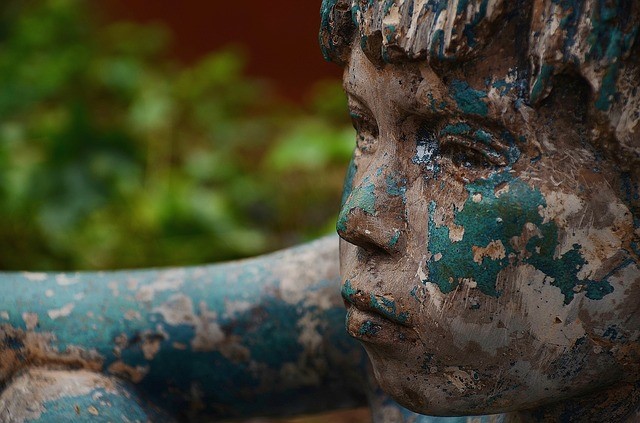We’ve all been taught about Bronze Age being one of the most popular and longest periods in human history. This is the period where bronze production and use first became widespread across the globe. Even when the Iron Age finally set in, bronze remained an essential metal for a vast array of industry-specific and day-to-day applications. In fact, even today, bronze production is a thriving industry.
Bronze is an alloy commonly made of about 88% copper and 12% tin. This proportion can be adjusted to produce different types of bronze, each with distinct qualities that fit specific applications. Other metals, such as aluminum, manganese, nickel, and zinc, and non-metals or metalloids, such as arsenic, phosphorus, and silicon can also be added to improve bronze’s properties so as to make high-quality brass bars, tubes, and plates.
Why does bronze tarnish?
While metals are among the toughest materials on the planet, they do have a weakness. Some metals corrode when exposed to certain substances for a significant period, while others form a protective layer that prevents further deterioration. Bronze belongs to the second group, thanks to its copper component.
Copper is well-known for its natural ability to turn green over time. This green film, called patina, is the result of copper molecules reacting to the elements in the air or liquid they are exposed to. It takes years for copper to become fully cloaked with a green patina. It all starts with tarnishing, which doesn’t cause bronze to change color yet but it takes away its luster.
Stages of Bronze Patination
All metals that contain copper undergoes the same patination. They only differ in the rate of color transformation. The process is quite easy to understand, too. Natural patina formation is triggered by the oxygen present in the air or moisture, although other elements may have the same if not greater effect on copper.
As oxygen molecules land on the surface of copper, a reaction is triggered, causing the formation of copper dioxide. At this stage, patina is just in its tarnish form, nothing too vivid has taken place yet. Copper dioxide makes contact with a new batch of oxygen and reacts to form another layer of material called copper oxide. At this point, you’ll notice a significant change in the color of the surface of bronze. Different colors can be produced by exposing bronze to other chemicals, such as sulfur and carbon dioxide.
When two molecules of copper dioxide react with one molecule of carbon dioxide and one molecule of water, a type of patina called malachite is formed, which is characterized by a dark green or bluish color. Two molecules of carbon dioxide and one molecule of water reacting with three molecules of copper dioxide form azurite, which gives bronze a shade of blue or purple. To achieve a dark green or emerald shade, four molecules of copper oxide must react with one sulfate molecule and three water molecules.
How to Clean Tarnished Bronze
No matter how long it takes patina to form on the surface of bronze, it’s actually quite easy to remove. It’s even easier to polish bronze if it has just started tarnishing. If you have bronze tube, plate, and other items at home that you’d like to bring back to their elegant, shiny state, here are some simple tips on how to clean bronze that you should follow.
- Wash the item with soap to remove excess dirt and grease from the surface of your bronze item. Rinse carefully and dry under the sun.
- While drying your bronze item, prepare a lemon juice and baking soda solution. Two tablespoons of baking soda drizzled with a small amount of lemon juice should form a paste, which you will later apply on the surface of the item.
- Once the bronze item is completely dry, start applying the solution on its surface. You can do this using your hand but make sure to wear gloves or by dabbing with a clean, dry cloth.
- Allow the paste to stay on the surface of the bronze item for 20 to 30 minutes. Then rub gently with a clean cloth until it becomes shiny again.
- You can do this process with other copper alloys, such as brass. However, some brass items have a gold-like coating for added luster, which may come off if you rub too hard.
How to Force Tarnish Bronze
Of course, if there’s a way to remove tarnish fast, there’s also a way to expedite the formation of patina on bronze. Patina, after all, isn’t always considered a blemish that needs to be polished off. Some people love the look of aging bronze furniture or fixtures. Here’s a quick guide.
- Clean and dry the bronze item thoroughly to remove dirt and grease.
- Heat the bronze item and apply an undercoat of bismuth nitrate. This will give the item an opaque white coat.
- After applying the undercoat, start brushing on ferric nitrate, but make sure to keep the bronze item warm by periodically heating it.
- When you’re done applying ferric nitrate, you should be able to see a little bit of change in the color of the bronze item. You can further increase this color change by applying cupric nitrate next.
- Apply wax to protect the surface of the item and wait for your desired tarnish shade to emerge.
It pays to know a thing or two about removing and forcing tarnish on bronze. If you are into crafts, this can be a profitable skill. Then again, to make sure that your bronze items are of high quality, you need to consult with copper alloy experts like Rotax Metals. Not only do they give the best advice when it comes to choosing the perfect metal for every project, but they supply the highest quality products, too.
Sources:


